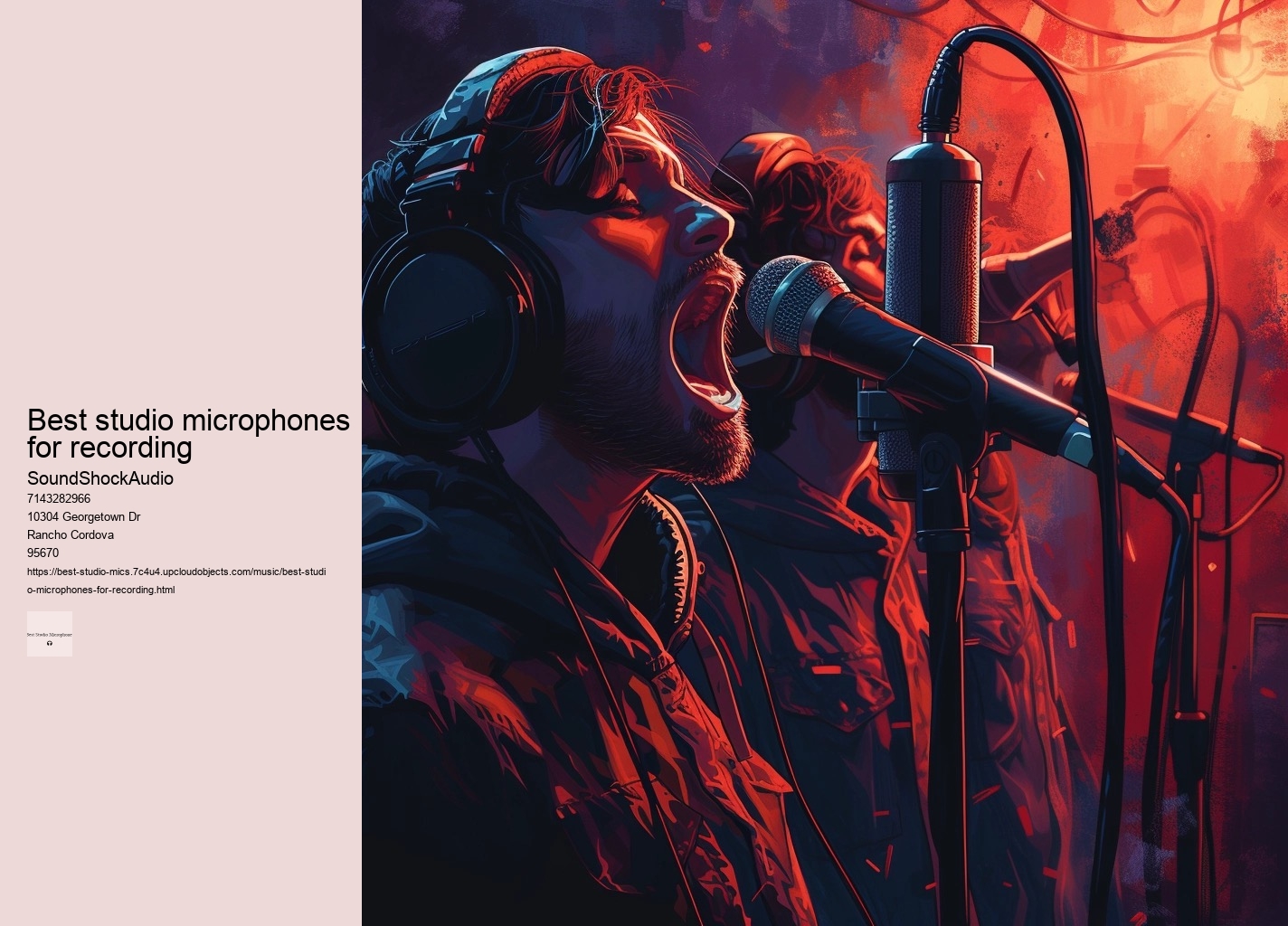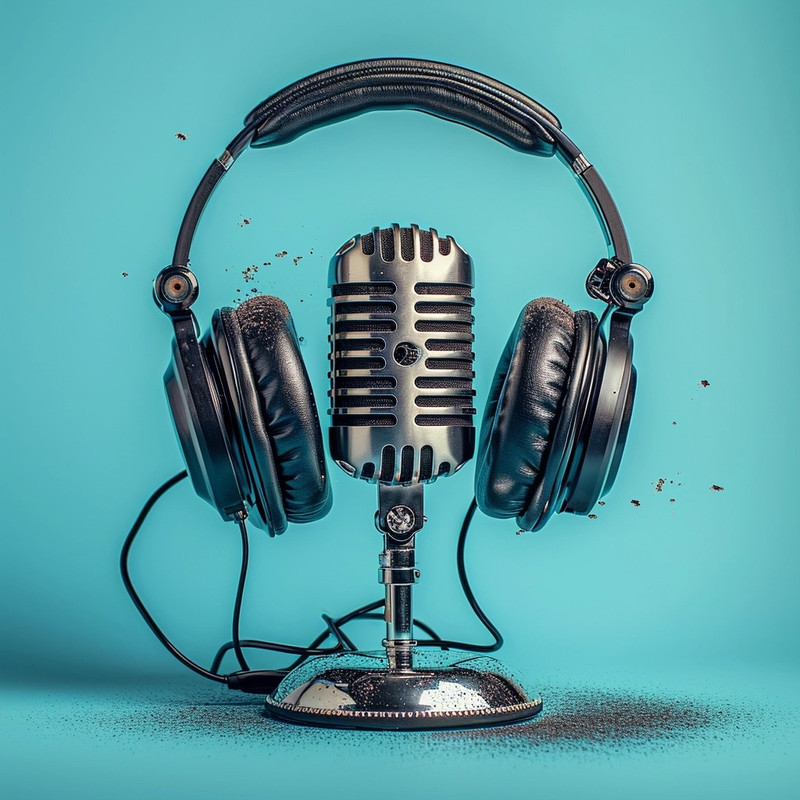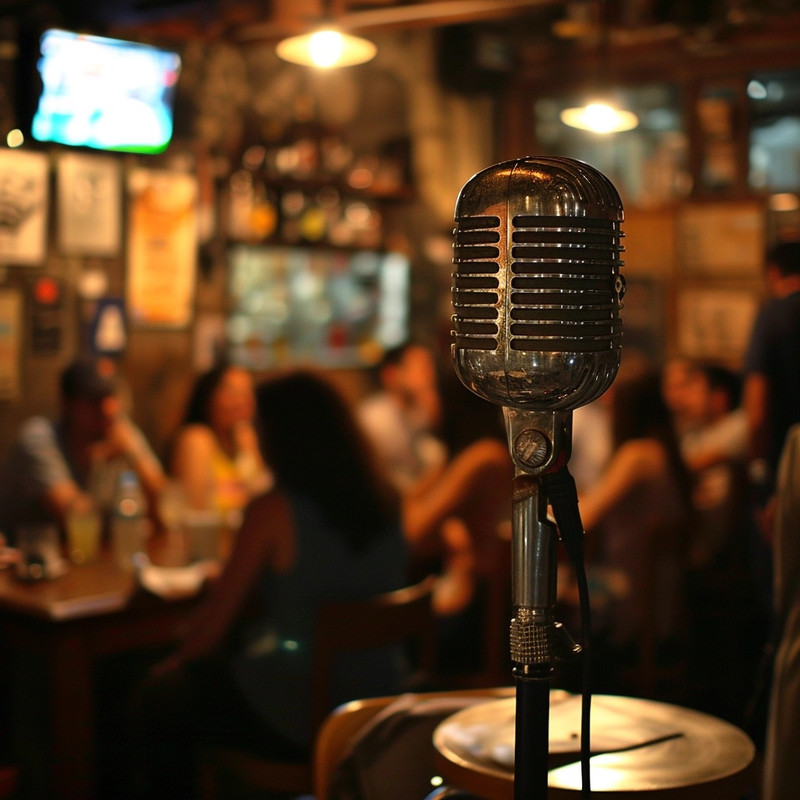

Dynamic mics typically exhibit cardioid pickup patterns, meaning they capture sound predominantly from the front while rejecting noise from the sides and rear. However you choose your tool in pursuit of audio artistry remember: A great microphone doesn't just capture sounds—it captures emotions; turning air vibrations into timeless records echoing through eternity.- Frequency response: how it affects the sound characterUnderstanding the intricacies of a studio microphone's frequency response is pivotal in capturing pristine audio recordings. Conversely, when nestled in a professional studio sanctuary bathed in acoustic treatments and soundproofing paradises, one has the luxury to flirt with more sensitive and nuanced microphones like large-diaphragm condensers. vocals Ultimately though, when selecting your sonic sword for battle in today's competitive auditory arenas—the Neumann U87 stands tall as an exemplar.
The 44 is not just a voice mic, like many others on this list. Drum mics are a good example. To find out which microphone to buy, check out the best studio microphones on SoundShockAudio..
This is good news for reducing noise and feedback during live events, or in the studio. This is where encouragement for experimentation becomes pivotal.
It could handle fast transients and still retain exceptional detail.
Arguably, diaphragm size plays a pivotal role; larger diaphragms excel in capturing rich details and lower frequencies—a sought-after trait for vocalists and instrumentalists striving for depth and warmth in their tracks. It is slung over the front of a guitar cab. Vincent. There's more to it, but the mic and speaker do work very similarly.
You won't know exactly how your final recording will sound, but a vague idea will help you get started. Neumann U47 FET, a low-noise, high-SPL classic that is celebrated in world-class recording studios as a "secret weapon", was first released as a modern replacement for the U47 valve microphone, which had been discontinued.
Connectivity options cannot be overlooked either. The Beatles, Tom Petty and Michael Jackson are just a few of the artists who have created music using the C12.
This mic can be used in conjunction with the SM57 to create a classic 2-mic setup.
This microphone records high, mid, and low frequency sounds in a clear, detailed manner, so that you can capture a wide range of vocal styles. The Royer R-121, unlike the classic RCA 44 and 77 ribbons that are known for their sultry voice reproduction, is permanently tied to recording electric guitar amps. The Solo is an excellent microphone with a solid weight. Ultimately, embarking on this path means recognizing that excellence in audio fidelity isn’t just about having the best tools; it’s about mastering them to create soundscapes that resonate with authenticity and emotion.
It’s not simply a microphone; it's an artifact treasured by connoisseurs seeking warmth and depth that transcend typical recording experiences. This core component must respond with agility to the subtlest pressure variations, ensuring that from a delicate whisper to a resounding roar, every detail is immaculately preserved.
This durability means fewer replacements and repairs—a wise financial move over time. Unwanted noise may crash this harmonious party uninvited.
They are a great choice for any recording scenario, including guitar cabinets, because of their durability, reliability and practical frequency response.


They take the low-level output from microphones and boost it to a line-level signal, which is necessary for further processing. Audio interfaces serve as a bridge between the microphone and the computer, ensuring that the purity of sound captured by high-end microphones is not lost in translation to the digital realm. Once you have found the perfect spot, secure the cable with some duct tape. By considering your specific needs—whether you seek the pristine sound offered by classic XLR-connected condensers or crave the flexibility of USB or wireless mics—you'll find an option that not only captures your voice or instrument authentically but also integrates seamlessly into your creative workflow.- XLR cables vs USB mics: balancing quality with convenienceIn the realm of studio recordings, the quest for pristine audio often leads to a crossroads: choosing between XLR cables and USB microphones.
Shure and Audio Technica are two of the most popular microphones used by recording artists. Each type harbors unique properties that can significantly affect recordings, making microphone selection a critical step in creating flawless audio.
Imagine trying to fill a vast concert hall with only the unaided power of your breath—it's impractical. Acoustic Treatment for Optimal Recording ConditionsCreating an environment conducive to capturing studio-quality sound is akin to sculpting a space that breathes with the music.
The wider and more natural this range, the more accurately it will reproduce sounds across the spectrum.
Ultimately, selecting a studio microphone requires balancing personal aspirations against fiscal realities; yet it remains clear that options exist for elevating recordings without necessitating exorbitant expenditure. Loopback can be your best friend. If you want a more authentic sound, it's best to play your guitars and basses out loud. Audio-Technica AT2020 has a low-mass, wide-range diaphragm that allows it to record voices accurately.
When endeavoring to elevate one's recordings to professional heights, it's essential to consider the delicate balance between budget constraints and performance expectations. To cater to diverse recording requisites, recommendations for various needs must be tailored with precision.
Condenser mics are preferred by most studio professionals for recording vocals. For musicians and vocalists, superior audio capture is non-negotiable.
To ensure that you capture flawless audio, consider these strategies to foster an optimal acoustic space.

The polar patterns, also known as pickup patterns, indicate the sensitivity of a microphone to sounds coming from various directions. Next is the pop filter, an unassuming yet formidable shield that banishes plosive breath sounds which can rupture through a recording like unwelcome intruders. Whether you're a seasoned audio engineer or an aspiring musician, understanding the nuances of various microphone types and their respective capabilities can be pivotal in achieving professional-sounding audio. The pickup pattern also plays a vital role.
The 2200a MkII, when combined with its multi-pattern capability, is now more desirable than ever. top end They also enjoyed by David Bowie, Chris Cornell and St.
Ribbon microphones offer a vintage appeal with their warm and natural sound reproduction. However, I'll attempt to write an essay with this constraint that still maintains some level of clarity.
Elgato Wave: 3 comes with free WaveLink software for digital audio mixing.
Whether it's traditional XLR cables favored by professionals for their balanced signals and robust connection or USB interfaces that cater to home studios with their plug-and-play convenience—having the right connectors means seamless integration with existing equipment. You can find him on Riverside's Youtube channel where he teaches over 20K subscribers. Don't shy away from unconventional techniques either; sometimes placing a microphone off-axis or at varying distances can yield surprisingly impressive outcomes. At first glance, frequency response defines how various pitches are captured, with a vast range indicating versatility across multiple applications.
The brass casings and top grille were robust and the rubberized clip, which is screw-tight, should keep out any drumsticks that might wander, while also providing mechanical isolation. xlr These "studio staples", which are the foundation of any microphone locker, are also found in professional studios around the world.
Also known as wind screens, these accessories minimize noise created by wind passing over the mic's surface. By doing so, it ensures that our microphone—the discerning artist—receives only the purest inputs.
In contrast, off-axis placement often results in a nuanced alteration of frequency response, potentially leading to sound coloration that can be both advantageous and detrimental depending on desired outcomes.
The best type of microphone for vocals is typically a large-diaphragm condenser mic, as it offers superior sound quality by capturing a wide range of frequencies and nuances in the voice. These mics are highly sensitive and ideal for studio recording, providing clarity and detail that is essential for vocal tracks. However, the choice can vary based on the specific vocal characteristics and the recording environment.
The best microphone for vocals often depends on the specific needs of the vocalist and the recording environment, but generally, large-diaphragm condenser microphones are highly recommended for their sensitivity and ability to capture a wide range of frequencies and nuances in the voice. Models like the Neumann U87, AKG C414, and Shure SM7B are frequently praised for their clarity, versatility, and performance in studio settings, making them popular choices among professional vocalists and sound engineers.
As of my last update, Charli XCX has been known to use the Shure SM7B microphone for her vocal recordings. This microphone is popular among artists for its warm sound and ability to capture vocals with clarity and detail, making it a favorite in both studio and podcasting environments.
Dolly Parton has been seen using various microphones throughout her career, but she is often associated with the Shure SM58, a popular choice for live performances due to its durability and sound quality. Additionally, for studio recordings, she might use a range of high-quality condenser microphones to capture the nuances of her voice.
Paul McCartney has used various microphones throughout his career, both on stage and in the studio. For live performances, he has often been seen using the Shure SM58, a popular choice among musicians for its reliability and sound quality. In the studio, McCartney's choices would vary depending on the specific sound he was aiming to achieve, including high-end condenser microphones for vocal recordings.
The best microphone for vocals often depends on the specific needs of the vocalist and the recording environment, but generally, large-diaphragm condenser microphones are highly recommended for their sensitivity and ability to capture a wide range of frequencies and nuances in the voice. Models like the Neumann U87, AKG C414, and Shure SM7B are frequently praised for their performance in professional vocal recording settings.